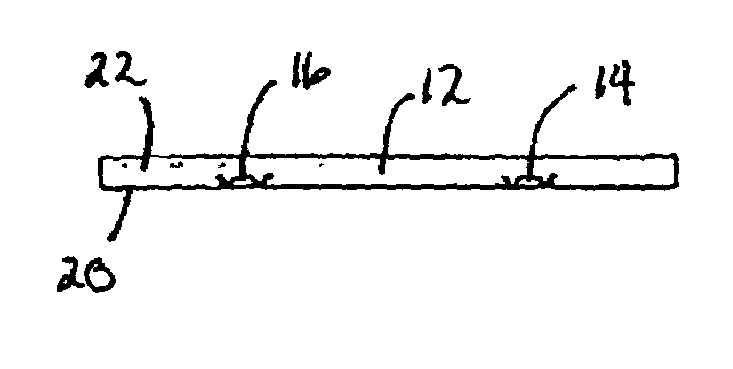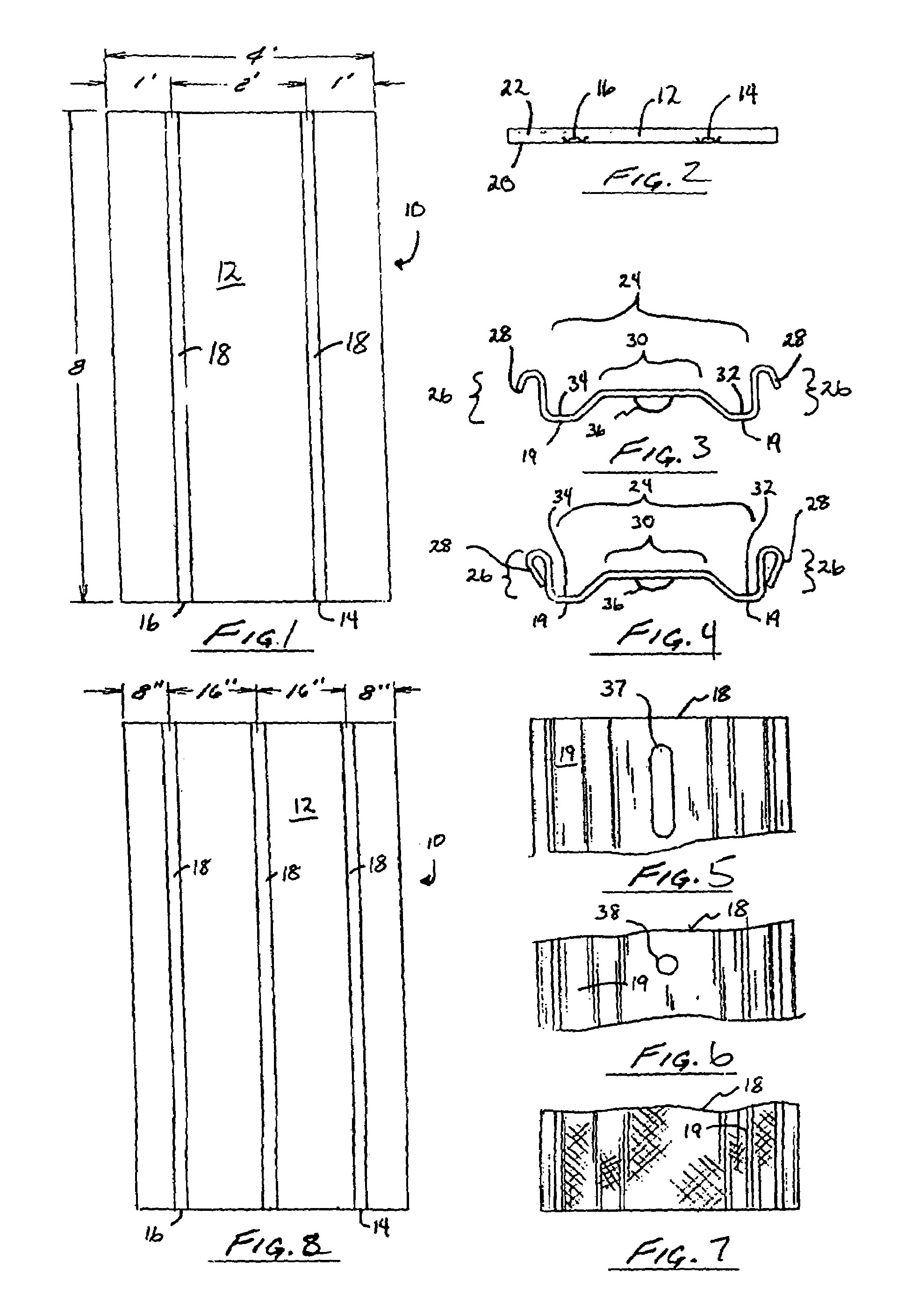Insulated panel for commercial or residential construction and method for its manufacture
a technology for insulating panels and commercial or residential construction, applied in the direction of heat-insulating roofs, building repairs, etc., can solve the problems of limited tensile strength of panels, inability to support a great deal of weight on small connectors by themselves, and inability to meet the needs of construction, etc., to achieve the effect of improving the gripping surfa
- Summary
- Abstract
- Description
- Claims
- Application Information
AI Technical Summary
Benefits of technology
Problems solved by technology
Method used
Image
Examples
Embodiment Construction
[0027]Referring now to FIGS. 1 and 2, an insulated foam panel 10 is shown that includes an rigid foam sheet 12 having two grooves 14, 16 into which two reinforcing strips 18 are disposed. The panel is preferably four feet wide by eight feet long (4′×8′) and between one and three inches (1″–3″) in thickness. The two reinforcing strips are preferably equidistantly spaced from the center of the panel two feet (2′) apart leaving a one-foot (1′) margin on either side. In this manner, when the panels are placed adjacent to each other by abutting their edges in a checkerboard arrangement, a continuous expanse of equidistantly spaced reinforcing strips on two foot centers will be provided.
[0028]On the outer surfaces of panel 10 are two thin reinforcing sheets 20 and 22. The first of these, sheet 20, extends completely across the side of the rigid foam sheet proximate to the reinforcing strips. The second of these, sheet 22, extends completely across and covers the entire surface of the oppo...
PUM
| Property | Measurement | Unit |
|---|---|---|
| Length | aaaaa | aaaaa |
| Length | aaaaa | aaaaa |
| Length | aaaaa | aaaaa |
Abstract
Description
Claims
Application Information
 Login to View More
Login to View More - R&D
- Intellectual Property
- Life Sciences
- Materials
- Tech Scout
- Unparalleled Data Quality
- Higher Quality Content
- 60% Fewer Hallucinations
Browse by: Latest US Patents, China's latest patents, Technical Efficacy Thesaurus, Application Domain, Technology Topic, Popular Technical Reports.
© 2025 PatSnap. All rights reserved.Legal|Privacy policy|Modern Slavery Act Transparency Statement|Sitemap|About US| Contact US: help@patsnap.com



